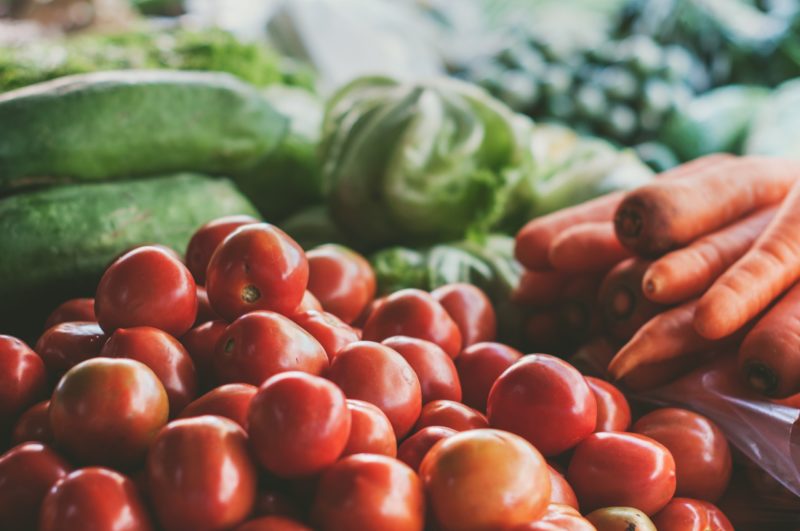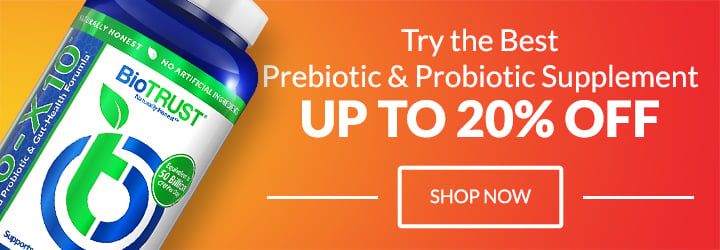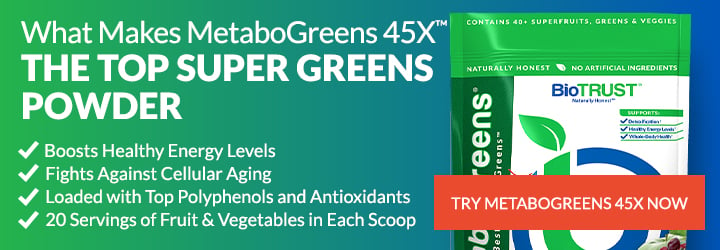What Is the Lectin-Free Diet? A Beginner’s Guide

Despite avoiding gluten, dairy, and other “probable suspects,” do you still struggle with nagging health issues like skin and joint problems, mood imbalances, thyroid dysfunction, gut problems, brain fog, difficulty losing weight, and fatigue? According to some experts, the problem may lie with a compound found in virtually all foods—including many unsuspecting healthy foods— called lectins. What are lectins? Where are they found? Should you be avoiding them? What does a lectin-free diet look like?
What are Lectins?
Lectins is an umbrella term that refers to a category of proteins. They are commonly referred to as “sticky” proteins because they are sugar-binding proteins that attach to cell membranes. While not entirely understood, lectins appear to serve multiple important functions. For example, lectins allow cells to communicate with each other.
In addition, some believe lectins are part of a plant’s protection mechanisms. According to Dr. Steven Gundry, a champion of the low-lectin and lectin-free diet, plants don’t want to be eaten, and one of the ways they defend themselves against predators (e.g., insects, animals) is by producing potentially toxic chemical compounds, including lectins.
Lectins are ubiquitous, and they are found not just in plants but also animals and microorganisms. The majority of lectins researched today, however, are isolated from plants. Along those lines, while lectins can be found in many components of plants, the richest abundance of lectins is found in seeds.
While lectins are found in all plants, it’s important to note that there are different types of lectins—specific to certain foods and/or categories of foods—and subsequently, they may have different functions and biological effects. For example, it’s well-documented that the lectin phytohaemagglutin (found in raw red kidney beans) causes symptoms of food poisoning, which is why you’ll never see sprouted red kidney beans.1
Along these lines, proponents of a lectin-free diet suggest there are certain types of lectins found in specific foods that may be particularly problematic. This is where the whole “plant paradox” comes into play. Quite a few foods that most would typically consider healthy may actually do the body harm. More specifically, it’s believed that these lectins can damage the gut lining and cause leaky gut, which can be connected to a whole host of health problems including those mentioned in the introduction.
What Foods Are Allowed on a Lectin-Free Diet?
Although a low-lectin diet is an elimination-style diet, which by nature tend to limit the number of foods “allowed,” there’s quite a large, varied menu of foods to choose from.
- Proteins (limited to about 4 oz/day):
- Wild-caught fish, including salmon, halibut, sardines, anchovies
- Crab, lobster, scallops, squid, oysters, and mussels
- Grass-fed, pasture-raised meat, including beef, pork, rabbit, lamb, sheep, bison, and other wild game
- Pastured poultry, including turkey, chicken (and eggs), Cornish hen, quail, ostrich, goose, and duck
- Fats and oils:
- Algae oil
- Olive oil
- Coconut oil
- Macadamia nut oil
- MCT oil
- Avocado oil
- Walnut oil
- Red palm oil
- Rice bran oil
- Sesame oil
- Nuts and seeds:
- Macadamia nuts
- Walnuts
- Pecans
- Pistachios
- Pine nuts
- Coconut
- Chestnuts
- Flaxseeds
- Hemp seeds
- Sesame seeds
- Brazil nuts
- Dairy:
- A2 milk
- Butter and ghee from grass-fed, pasture-raised cows
- Goat cheese and kefir
- Sheep cheese and kefir
- Coconut yogurt
- Organic heavy cream
- Organic sour cream
- Organic cream cheese
- *The explanation for some high-fat dairy (from cow’s milk) is that it doesn’t contain casein (more on this below)
- Fruit:
- Avocados
- All berries, only when in season
- Vegetables:
- Cruciferous veggies (broccoli, cauliflower, Brussels sprouts, kale, cabbage, etc.)
- Dark leafy greens (spinach, swiss chard, collard greens, arugula, romaine, endive, dandelion greens, escarole, mustard greens, etc.)
- Celery
- Onions
- Leeks
- Chives
- Scallions
- Chicory
- Carrots
- Artichokes
- Beets
- Radishes
- Okra
- Asparagus
- Garlic
- Parsley
- Basil
- Mint
- Sea vegetables
- Mushrooms
- Starchy carbohydrates:
- Green bananas and plantains
- Cassava
- Sweet potatoes or yams
- Rutabaga
- Parsnips
- Yucca
- Celery root
- Glucomannan
- Persimmon
- Jicama
- Taro roots
- Turnips
- Millet sorghum
- Other:
- Olives
- Dark chocolate (72% cocoa or greater)
- All herbs and seasonings (except chili pepper)
- Vinegars
- Red wine
- Champagne
- Honey
Special Offer:Get MetaboGreens up to 20% OFF (very limited inventory)
What Foods Should You Avoid on a Lectin-Free Diet?
This is a big part of the allure and shock factor with the lectin-free diet. In a nutshell (no pun intended), potentially problematic lectins are found in many plant-based foods that are typically considered quite healthy (such as whole grains, legumes, fruits, traditional dairy, and even certain vegetables). This is where the idea of the “plant paradox” comes into play. Here’s an elaborate list of foods that are typically “off limits” on a lectin-free diet.
- All Grains (including):
- Wheat
- Oats
- Quinoa
- Rye
- Bulgur
- Rice
- Barley
- Buckwheat
- Spelt
- Corn
- Vegetables
- Tomatoes (unless peeled and deseeded)
- Cucumbers (unless peeled and deseeded)
- Bell peppers (unless peeled and deseeded)
- Chili peppers (unless peeled and deseeded)
- Sugar snap peas
- Green beans
- Zucchini
- Pumpkins
- Squashes
- Eggplants
- Fruits
- All fruits (except in-season fruit)
- Ripe bananas
- Melons
- Goji berries
- Beans and Legumes
- All beans including sprouts
- All lentils
- Peanuts
- Peas
- Chickpeas
- Soybeans
- Nuts and seeds
- Pumpkin
- Sunflower
- Chia
- Cashews
- Dairy
- Yogurt
- Greek yogurt
- Frozen yogurt
- American cheese
- Ricotta
- Cottage cheese
- Kefir
- Any casein-containing protein powder
- Proteins
- Any grain- or soy-fed fish, shellfish, poultry, beef, lamb, or pork (including eggs)
- Oils
- Soybean
- Grapeseed
- Corn
- Peanut
- Cottonseed
- Safflower
- Sunflower
- Canola
- Partially hydrogenated oils
It would hopefully go without saying, but a low-lectin diet is also one that is based on whole foods. In other words, fast foods, processed foods, and junk foods (i.e., “foods” containing added sugars, refined oils, refined grains/flours) are off limits. In sum, the “shock factor” about the lectin-free diet is that lots of “healthy” foods we’ve been trained to eat for centuries contain these potentially dangerous lectins, including:
- Grains (including whole grains, corn, and quinoa)
- Certain vegetables (particularly nightshades)
- Certain nuts and seeds
- Beans and legumes
- Traditional dairy (with the probable suspect being a type of casein [A1], which has indeed been shown to be problematic for some folks2)
- Grain-fed and farm-raised animal proteins
Does Everyone Need to Follow a Lectin-Free Diet?
If you’re the type of person who’s tried various types of elimination diets (e.g., GAPS, Paleo Autoimmune, Whole 30)—and most importantly, stuck with them consistently—yet you’re still struggling with health issues, then a low-lectin diet is certainly worth a shot. While champions of the low-lectin diet provide a very compelling story for avoiding these “hidden dangers in ‘healthy’ foods,” at present, there isn’t very much supporting evidence in humans.
That’s certainly not meant to dismiss or discredit the rationale or potential application of a lectin-free diet. Quite the contrary, as it’s becoming increasingly clear that individuals are as unique as fingerprints, and personalized nutrition is a very real thing. In other words, certain people may be particularly sensitive to lectins, and there may be genetic factors that contribute to make these folks well-suited for a low-lectin diet. It will be very exciting to see new research emerge showcasing who should avoid lectins and the types of health benefits that may ensue.
Now, if you’re the type of person who’s looking for “the next best thing” and thinks the grass is always greener on the other side, then I’m not sure a lectin-free diet is the answer. In other words, if the only thing that’s consistent about your nutrition is the inconsistency, then being fanatical about lectins (because it’s the “in” thing) may be setting yourself up for failure. And even if you are consistent, you may be unnecessarily eliminating nutrient-dense foods and food groups that could offer additional health benefits.
How Do You Reduce Lectins in Food?
That’s a super question, and even if you couldn’t care less about lectins, this is certainly one page you could take from the low-lectin doctrine. Why? Because advocates of the low-lectin and lectin-free diet offer sage advice on food preparation. In particular, they frequently turn to our ancestors and even ancient cultures for proper food preparation techniques.
- Soak. They say patience is a virtue, and when you soak beans and grains overnight (changing the water often), it reduces lectins. And when you add baking soda, it may help neutralize lectins even more.
- Sprout. Soaking typically goes hand-in-hand with sprouting, which decreases the lectin content in seeds, grains, and legumes. Generally speaking, the longer the duration of sprouting, the more the lectins are neutralized, and this is particularly relevant for grains and beans.
- Ferment. Bacteria have evolved to help us break down lectins, and that’s part of the reason the world’s healthiest cultures eat so many fermented foods. The fermentation process allows bacteria to digest and neutralize many of the potentially damaging substances in plants—including lectins.
- Pressure cooking. In general, cooking seems to help neutralize lectins, particularly after high-lectin foods are soaked. For whatever reason, a pressure cooker seems to be the best bet for destroying lectins.
- Peel and de-seed. The seeds, peels, rinds, and hulls tend to be the most lectin-rich portions of plants. This may (or may not) be why traditional Italians peel and de-seed tomatoes before making tomato sauce and may (or may not) be why Southwest American Indians always char their chili peppers and peel and de-seed them before grinding them.
- Refine. This will probably surprise most people, but advocates of the low-lectin and lectin-free diet suggest eating refined over whole grains (but would prefer neither), such as white (instead of brown) rice and white (instead of whole grain) pasta and bread. Why? For starters, that’s what Asian, Italian, and French cultures have done for generations. And, as mentioned above, much of the lectins in grains are concentrated in the hulls, which are removed/milled from refined grains. From that standpoint, “The advice to eat whole grain, or whole wheat, or whole brown rice is actually one of the biggest mistakes we’ve ever made.”
- Shop local and eat seasonal. Produce—particularly fruit—contains fewer lectins when ripe, so eating apples, berries, and other lectin-containing fruits at the peak of ripeness helps minimize your exposure to lectins.
Are Lectins Really to Blame?
There’s compelling reason to believe that certain lectins could be problematic. In this age of personalized nutrition, it would be foolish to rule out the possibility that some people may be particularly sensitive to them. On the flipside, there’s evidence suggesting that lectins are potentially beneficial. In fact, certain lectins are being researched for their anti-cancer potential—both diagnostic and therapeutic.3,4
Another point to consider is that many of the foods omitted from lectin-free and low-lectin diets contain other compounds that may be problematic for some people. For example, many of the grains, beans, and even some of the fruits and vegetables you’d avoid on a low-lectin diet would also be excluded from a low-FODMAP diet, which has a fairly substantial amount of supporting clinical evidence (at least for digestive-related issues).5
If you think you’re ready to give a low-lectin or lectin-free diet a shot, good for you! I’m all about testing and personal experimentation, and I’d love to hear how it works for you. Here are a few final words:
- The terminology “lectin-free” is a bit misleading. Lectins are ubiquitous, and champions of a low-lectin diet posit that there are certain lectins—found predominantly in seemingly unsuspecting “healthy” foods (including whole grains, legumes, and even certain vegetables and fruits)—that are potentially problematic.
- Along those lines, a low-lectin diet is essentially an elimination-style diet. Meaning, after a period where you’ve consistently eliminated the “probable suspects,” you can slowly reintroduce certain foods or food groups that you previously eliminated to see how you respond. For instance, some people may find that they do perfectly fine with tomatoes and potatoes, yet beans and peanuts are no-nos.
- In my research, there’s a lot of “noise” out there—on both sides of the lectin fence. If you’re committing to avoiding lectins (going lectin-free per se), then the best resource, in my opinion, is Dr. Steven Gundry, who literally wrote the book on lectins, called The Plant Paradox, which is worth checking out regardless of your stance. Secondly, Joe Cohen (who’s incredibly intelligent, well-researched, and extremely generous with his time, knowledge, and resources) at SelfHacked has put together some phenomenal resources on lectins, including his Lectin Avoidance Diet.







